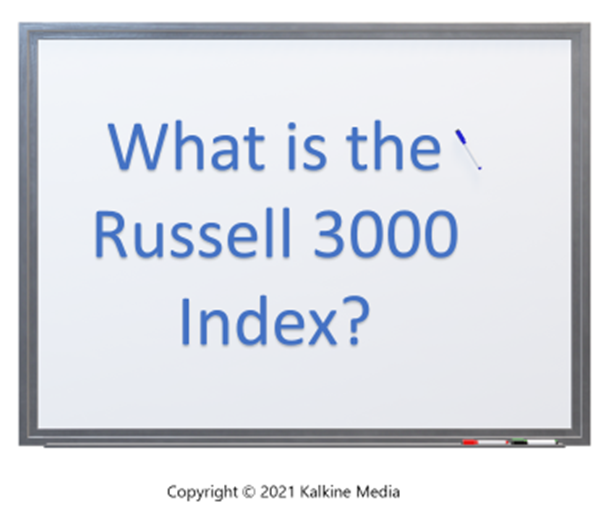Russell 3000 is a market index that tracks the top 3,000 public enterprises, weighted by market capitalization, in the US. The index provides a comprehensive view of these companies that account for 98 per cent of all the listed incorporated firms in the country.
Founded in January 1984, the Russell 3000 covers a broad range of financial products, including Russell 1000 (large-cap) and Russell 2000 (small-cap). It provides an unbiased, comprehensive, and stable barometer of the market. The Index is reconstituted annually to ensure a growing and new companies can become part of it.
The FTSE Russell Group, wholly owned by the London Stock Exchange Group, owns and operates the Russell 3000. The FTSE Russell is a global provider of analytics, benchmarks, and data solutions with multiple capabilities. The FTSE Russell also manages the Russell 1000 as well as the Russell 2000.
The characteristic and performance of the Russell 3000 are shared by the FTSE Russell Group monthly. For instance, as of May 31, 2021, the Russell 3000 has 3,057 holdings with an average market capitalization of US$ 415.968 billion and the largest stock by market capitalization of US$ 2,091.965 billion.
The Russell 3000 have divided the market into segments as per the Industry Classification Benchmark. The technology segment holds a significant share in the Russell 3000, followed by industrials and consumer discretionary. As of May 31, 2021, the top ten companies under Russell 3000 are:
- Apple Inc.
- Microsoft Corp.
- Amazon Com Inc.
- Facebook Inc.
- Alphabet Inc. Cl A
- Alphabet Inc. Cl C
- Berkshire Hathaway Inc.
- JPMorgan Chase & Co.
- Tesla Inc.
- Johnson & Johnson

Summary
- Russell 3000 is a market index that tracks the top 3,000 public enterprises, weighted by market capitalization, in the US.
- The index provides a comprehensive view of these companies that account for 98 per cent of all the listed incorporated firms in the country.
- Founded in January 1984, the Russell 3000 covers a broad range of financial products.
Frequently Asked Questions (FAQs)
- How does Russell 3000 work?
The Russell 3000 represents the top 3,000 companies incorporated in the United States and provides an unbiased exposure to the US equity market. Rank date (in May) is when FTSE Russell announces the list of top 3,000 companies who made it into the index. The selected companies are graded based on their market cap on the rank date. However, in actual they are reconstituted into the index on the last Friday of June.
To be included in the Russell 3000, companies must meet specific eligibility requirements. The requirements include a US$ 1 share price on the rank day, the minimum market capitalization of US$ 30 million, and five per cent of the outstanding shares are available in the stock market to trade. Any US incorporated company with a small portion of its outstanding shares in the stock market is not eligible for inclusion. In addition, initial public offerings (IPOs) taking place between the two reconstitutions are included quarterly in the index post meeting the requirements.
- How important the Russell 3000 is for individual investors?
Individual investors participate in the Russell 3000 to gain exposure to top 3,000 companies, accounting for 98 per cent of the US equity market.
Some critics note that the Russell 3000 index’s performance lines up with the S&P 500 and does not provide meaningful exposure to smaller companies. Also, it is believed that Russell 3000 overweighs selected sectors.
- What are some of the advantages and disadvantages of investing in the Russell 3000?
Advantages of investing in Russell 3000 are:
- The Russell 3000 gives investors an exposure to a diversified list of 3,000 different companies.
- It is said to provide decent returns to the investors as the returns are in line with that of the S&P 500.
Disadvantages of investing in Russell 3000 are:
- The Russell 3000 is said to be biased towards the large-cap companies and not have an adequate representation of the smaller companies.
- The Russell 3000 has reportedly allocated most of the assets in the selected sectors like technology, consumer discretionary, healthcare, industrials, etc. Thus, the investors might miss out on gains from other investors.
- How is the S&P 500 different from the Russell 3000?
- The S&P 500 traces the top 500 listed firms in the US equity market. It accounts for approximately 80 per cent of the US market; on the contrary, Russell 3000 accounts for 98 per cent of the market. Thus, Russell 3000 offers a broader market coverage.
- Due to less coverage, investors of the S&P 500 are exposed to large companies. The Russell 3000 also tracks the smaller companies and diversifies the investor’s portfolio.
- The Russell 3000 is reconstituted annually, whereas the S&P 500 is rebalanced quarterly, and the reconstitution can occur anytime.
- How does the Russell 3000 provide a true picture of the US equity market?
The Russell 3000 provides a true picture of the US equity market through:
- Objective construction methodology: It provides a complete and unbiased view of the underlined market segments and the U.S. equity market.
- Modular market segmentation: The distinct building blocks provide insights to make asset allocation decisions and provides the current state of the market.
- Reliable governance and maintenance: The reliable and disciplined maintenance process ensures that the index must provide an accurate market picture. A well-defined governance system backs the process.
 Please wait processing your request...
Please wait processing your request...